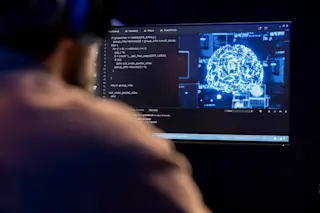This article was originally published on Nov. 16, 2022.
The use of human voiceover work is ubiquitous across modern media platforms, from video games to television and movies. But increasingly, the voices you hear on-screen aren’t totally human-made; they’re the result of artificial intelligence.
Respeecher, a voice cloning company founded in 2018 and based in Ukraine, is currently working with LucasFilm to provide voice services for the Star Wars projects. Respeecher’s speech-to-speech technology is responsible for synthesizing the voice of a younger Luke Skywalker in both The Mandalorian and The Book of Boba Fett, as well as restoring James Earl Jones’ iconic Darth Vader voice to its original quality in the Obi-Wan Kenobi series.
The company also digitally recreated the voice of the late NFL coach Vince Lombardi for a 2021 Super Bowl commercial and helped make possible an Aloe Blacc tribute to Avicii, in which Blacc sings in multiple ...















